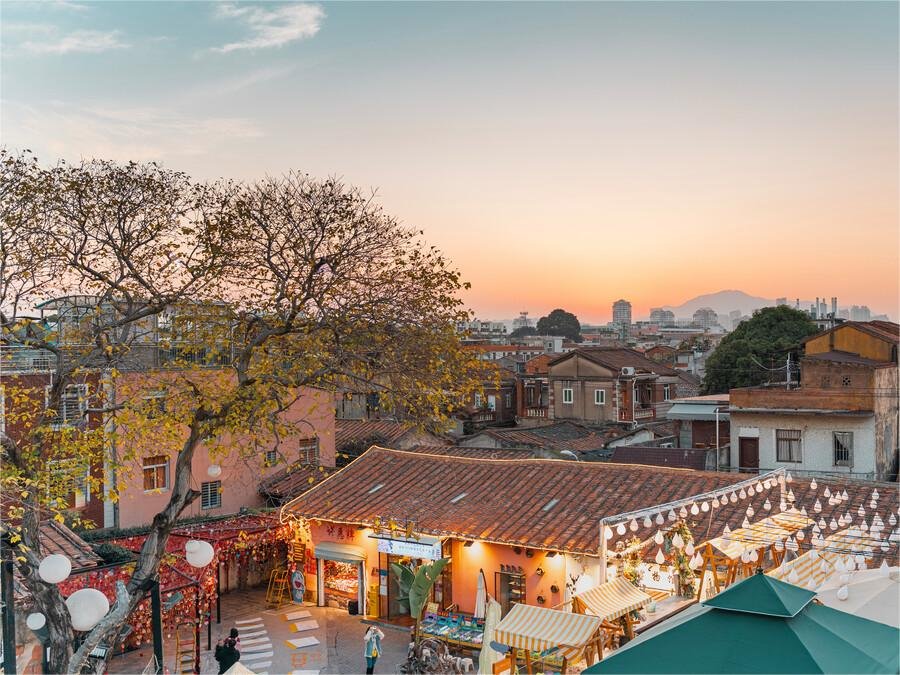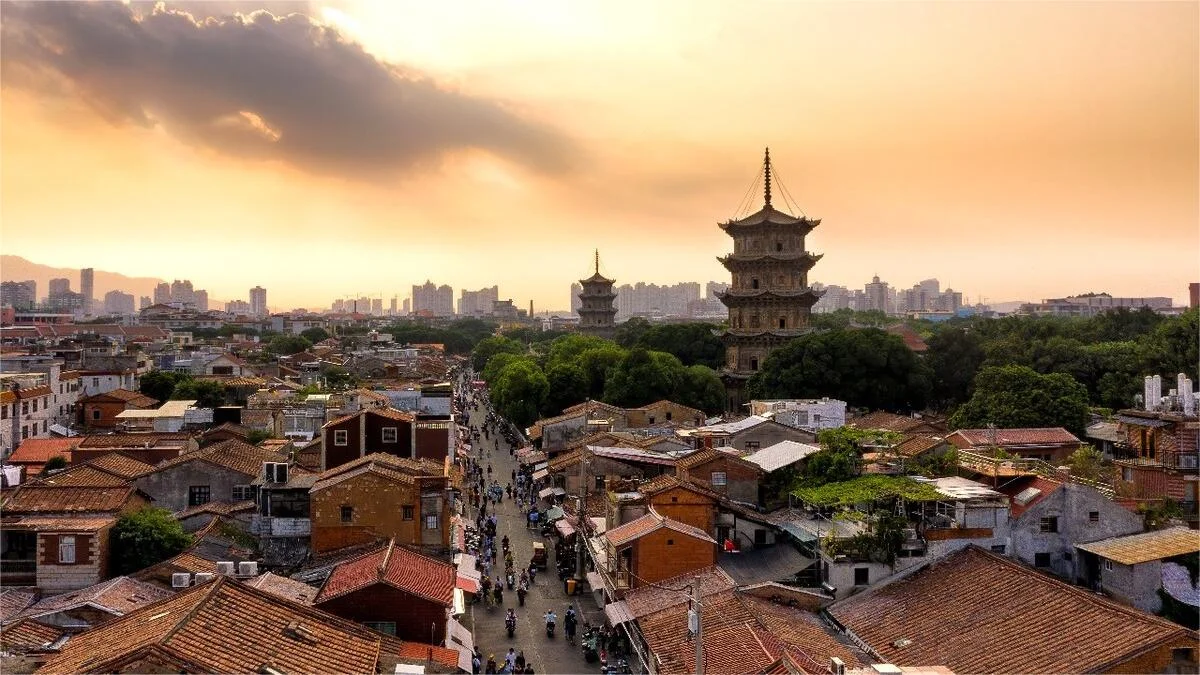Quanzhou West Street (泉州西街) is the oldest developed street and area in Quanzhou, dating back to the Song Dynasty. It symbolizes the city’s historical prosperity and is the best-preserved ancient street district in Quanzhou, featuring numerous buildings that retain their original historical appearance.
For over a thousand years, Quanzhou West Street has been like a string of dazzling pearls, connecting numerous splendid historical sites, ancient residences, and legendary tales from the Tang and Song Dynasties. Beyond landmarks like Kaiyuan Temple, the East and West Pagodas, and City Heart Pagoda, it features a wealth of unique large houses (古大厝) and charming wooden buildings. This living architectural museum encapsulates the rich historical and cultural heritage of Quanzhou, while narrating the city’s transformation and modernization over the centuries.
Table of Contents
- Basic Information
- Location and Transportation
- Highlights of Quanzhou West Street
- Vlog about Quanzhou West Street
- Other Attractions in Quanzhou Ancient City
Basic Information
| Estimated Length of Tour | 1 hour |
| Ticket Price | Free |
| Opening Hours | 24 hours a day |
Location and Transportation
Quanzhou West Street is located in Licheng District, Quanzhou City, Fujian Province. To get there, you can take bus 2, 40, 41, 201, or K901 and get off at Mengya Alley stop (孟衙巷口).
Highlights of Quanzhou West Street
Historical Significance and Architecture

West Street boasts a diverse array of architectural styles, including ancient large houses (古大厝), modern arcade buildings, and residences of notable figures. Historical records indicate that there are around twenty to thirty known former residences or sites of historical figures in the West Street area, with connections to every dynasty since the Tang Dynasty. For instance, during the Southern Song Dynasty, the residence of Prime Minister Zeng Conglong was located in Zengjing Alley, while the first person from Quanzhou to pass the imperial examination, Ouyang Zhan, had his residence in Jiadi Alley. Another notable figure, Liu Zheng, a prime minister for three consecutive dynasties during the Northern Song Dynasty, gave his name to Sandai Alley.
The intellectual and cultural significance of West Street reached its peak during the Ming and Qing Dynasties. For example, the residence of Li Tingji, a high-ranking official during the Wanli reign, was located in Gantang Alley, and the famous Neo-Confucian scholar Cai Qing’s former residence was in Xiaogan Alley. Additionally, the residences of Yang Tingxiang, Vice Minister of the Ministry of Rites during the Wanli period, and Chen Minghua, Vice Censor of Guangdong, were situated in Wen Kui Alley.
Memorial Archways and Distinguished Residences

West Street also featured numerous memorial archways, erected to honor achievements, virtues, and filial piety in feudal society. Historical records from the late Qing Dynasty and early Republican period indicate that there were several archways along the main street, including Zaoshi Archway, Duoshi Archway, Huikui Archway, and others, each commemorating various accomplishments and virtues.
Noteworthy residential buildings include the Liao Residence at No. 35 Wuta Alley, a two-story structure with five openings, featuring unique circular wooden windows. Another significant residence is the Yan Residence at No. 58 Huitong Alley, characterized by brick carvings, a courtyard, and distinctive architectural elements such as flower-patterned windows.









West Street is a popular spot that gathers various snacks from Quanzhou. The architecture gives a feeling of stepping back into the old Hong Kong of the 1980s, and you can see various headpieces worn by the local Xunpu women on the streets.
I visited Kaiyuan Temple, and despite the rainy weather, there were still a lot of people. The West Street was very crowded.
Although it was the off-season, there were still quite a few people in West Street. After taking a stroll, my impression is that the Guanyue Temple is the busiest in terms of visitors and incense offerings, while the Confucius Temple is the quietest.
The old houses on West Street are mostly residential, with numerous well-preserved old mansions of Chinese expatriates. There are also kindergartens, elementary schools, and homes where owners live, as well as properties rented out for accommodations, dining, handicraft workshops, and cozy cafes. Hidden among them are many fantastic little shops. Each alley varies in width, contrasting sharply with the bustling noise of the main street. Strolling leisurely through these alleys is quite enjoyable, and you are likely to encounter delightful… Read more »
Don’t just stay in the main area of West Street where it’s crowded with people. The back half and the smaller alleys on both sides also feature beautiful Minnan-style ancient buildings and creative stores that blend art and culture. You can take a stroll and snap some pictures, and everything looks great!
Quanzhou is really a perfect place for someone to leisurely eat and stroll around. The alleys hide many great spots for taking photos, especially during sunset which is absolutely beautiful. There are also many hidden culinary gems along the West Street that are quite impressive!
This morning I went to West Street, and there was not a single place nearby to park my electric scooter; everywhere was packed.
Do not drive to West Street during the National Day holiday, as there will be road restrictions and it’s sure to be congested. It’s recommended to park in a nearby parking lot and then take a taxi there.